 Search by Keyword
|
“THERE’S A PLACE”
(Paul McCartney – John Lennon)
 There are a plethora of examples of popular recording artists that released songs they felt very strongly would be big hits, only to wind up being much lesser known achievements. Not too many of us could probably name the b-sides of such huge hits as “I Got You Babe,” “Na Na Hey Hey Kiss Him Goodbye” or Rod Stewart's big smash “Maggie May.” Amazingly, all of these #1 hits were intended to be throwaway b-sides while the other side of these records were thought to be the ones that would make the bigger impact. In the recording industry, one can never know. There are a plethora of examples of popular recording artists that released songs they felt very strongly would be big hits, only to wind up being much lesser known achievements. Not too many of us could probably name the b-sides of such huge hits as “I Got You Babe,” “Na Na Hey Hey Kiss Him Goodbye” or Rod Stewart's big smash “Maggie May.” Amazingly, all of these #1 hits were intended to be throwaway b-sides while the other side of these records were thought to be the ones that would make the bigger impact. In the recording industry, one can never know.
 Similarly, consider what occurred with Lennon and McCartney's newly written song “There’s A Place.” As The Beatles excitedly entered EMI Studio Two on February 11th, 1963 to record their first LP, it was their priority to record this song first. They had high expectations that this serious, well-constructed song would have a large impact on their career. Similarly, consider what occurred with Lennon and McCartney's newly written song “There’s A Place.” As The Beatles excitedly entered EMI Studio Two on February 11th, 1963 to record their first LP, it was their priority to record this song first. They had high expectations that this serious, well-constructed song would have a large impact on their career.
But this was not to be. It actually ended up in a very unflattering position on their album; next to last on side two. It was released as a single in America, but only as the b-side to the very successful “Twist And Shout.” And at a time when US disc jockeys were even playing the b-sides of singles in order to find more Beatles product to play on the air, "There's A Place" was hardly noticed. In addition, after October of 1964, it was not included on any American album until 1980, which gave it the reputation of being one of a few "lost Beatles tracks."
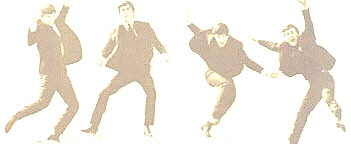 It seems that the initial excitement about "There's A Place" waned just after the band recorded it, although, upon further listening and the passing of time, it can be assessed that this was truly a unique, well-crafted slice of Beatlemania which shouldn’t be forgotten. “There’s A Place” has truly found a place in the hearts of Beatles' fans throughout the years. It seems that the initial excitement about "There's A Place" waned just after the band recorded it, although, upon further listening and the passing of time, it can be assessed that this was truly a unique, well-crafted slice of Beatlemania which shouldn’t be forgotten. “There’s A Place” has truly found a place in the hearts of Beatles' fans throughout the years.
Songwriting History
‘”There’s A Place’ was my attempt at a sort of Motown black thing,” explained John in his 1980 Playboy interview, “but it says the usual Lennon things: ‘In my mind there’s no sorrow.’ It’s all in your mind.”
 From this quote you would assume that he wrote the entire song himself and that both the melody and the lyrics were inspired by John's love for Motown music. Most authors have felt this way for years but, while John Lennon probably was the major catalyst for this song, Paul apparently played a vital role as well. It was McCartney that possessed a copy of the soundtrack album to "West Side Story," Leonard Bernstein’s 1957 musical that contained the song “Somewhere.” These lyrics begin with “There’s a place for us,” which became the original inspiration for "There's A Place." "Other than 'West Side Story,' John hated musicals," Paul wrote in his book "The Lyrics." "'West Side Story' we went to see together - a touring production in Liverpool. We saw the film, of course, with that famous opening shot of New York from a helicopter. We liked that and thought it was ballsy enough for us." From this quote you would assume that he wrote the entire song himself and that both the melody and the lyrics were inspired by John's love for Motown music. Most authors have felt this way for years but, while John Lennon probably was the major catalyst for this song, Paul apparently played a vital role as well. It was McCartney that possessed a copy of the soundtrack album to "West Side Story," Leonard Bernstein’s 1957 musical that contained the song “Somewhere.” These lyrics begin with “There’s a place for us,” which became the original inspiration for "There's A Place." "Other than 'West Side Story,' John hated musicals," Paul wrote in his book "The Lyrics." "'West Side Story' we went to see together - a touring production in Liverpool. We saw the film, of course, with that famous opening shot of New York from a helicopter. We liked that and thought it was ballsy enough for us."
 Not only is the song "There's A Place" described by Barry Miles, in his 1997 book “Many Years From Now,” as “co-written,” the author even suggests that there’s “a bias towards being Paul’s original idea since he was the owner of the soundtrack album…'West Side Story.'” While this may be a stretch, Paul’s quote from the above book does appear to confirm his involvement in the song's writing: Not only is the song "There's A Place" described by Barry Miles, in his 1997 book “Many Years From Now,” as “co-written,” the author even suggests that there’s “a bias towards being Paul’s original idea since he was the owner of the soundtrack album…'West Side Story.'” While this may be a stretch, Paul’s quote from the above book does appear to confirm his involvement in the song's writing:
"But in our case this 'place' was in the mind, rather than round the back of the stairs for a kiss and a cuddle. This was the difference with what we were writing, we were getting a bit more cerebral." It's interesting to note that it wasn't until three-and-a-half years later that The Beatles, in particular Lennon, began to delve deeper into "the mind" in his lyrics, such as with "Tomorrow Never Knows" and "I'm Only Sleeping."
 As for John Lennon's crediting his inspiration to Motown, "There's A Place" shows a striking similarity to The Marvalettes' song "I Want A Guy," which was the 1961 b-side to their hit "Twistin' Postman" on Motown's Tamla label. While both songs contain a similar tempo and structure, The Beatles strategically mimic this Marvalettes' song in particular by stopping at the beginning of each verse and vocalizing an identical five-note acapella melody line (such as on the word "The-e-e-e-ere"). As for John Lennon's crediting his inspiration to Motown, "There's A Place" shows a striking similarity to The Marvalettes' song "I Want A Guy," which was the 1961 b-side to their hit "Twistin' Postman" on Motown's Tamla label. While both songs contain a similar tempo and structure, The Beatles strategically mimic this Marvalettes' song in particular by stopping at the beginning of each verse and vocalizing an identical five-note acapella melody line (such as on the word "The-e-e-e-ere").
 The song is included among the many that were written in the front room of McCartney’s Forthlin Road home. Since it was so fresh in their minds and they were so eager to spring it out for their first album, it is estimated that it was written in early February 1963 just before their recording session on the 11th of that month. The song is included among the many that were written in the front room of McCartney’s Forthlin Road home. Since it was so fresh in their minds and they were so eager to spring it out for their first album, it is estimated that it was written in early February 1963 just before their recording session on the 11th of that month.
Recording History
 Upon their entering EMI Studio Two on February 11th, 1963 to record their first album, The Beatles chose to record this newly written song first. Although nearly half of the material on their first British LP were cover songs, emphasis was first given to original material through the encouragement of their manager Brian Epstein. With the exception of “A Taste Of Honey,” all of the cover songs recorded for the album were done at the very end in order to fill the allotted 14 tracks on the album before the day was over. Upon their entering EMI Studio Two on February 11th, 1963 to record their first album, The Beatles chose to record this newly written song first. Although nearly half of the material on their first British LP were cover songs, emphasis was first given to original material through the encouragement of their manager Brian Epstein. With the exception of “A Taste Of Honey,” all of the cover songs recorded for the album were done at the very end in order to fill the allotted 14 tracks on the album before the day was over.
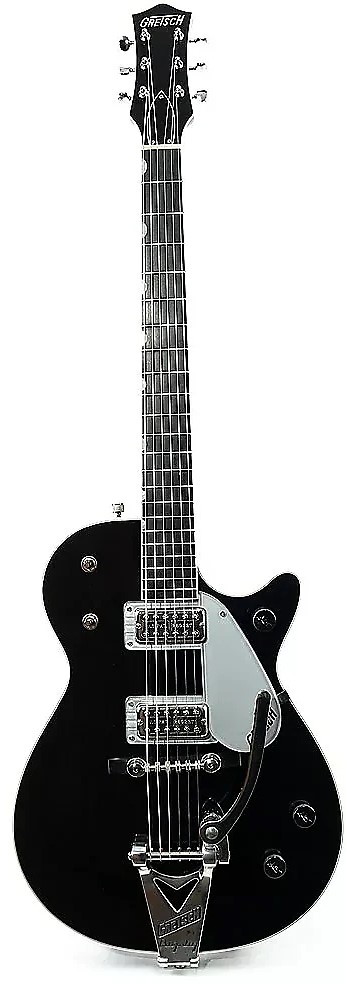 Starting at around 10 am, "take one" of "There's A Place" was a complete rendition with all the exact nuances already in place, except for Lennon's harmonica riff which appears to have been an afterthought. Harrison performed what we recognize as the harmonica riff as his lead guitar part. This take appears flawless except for two things: George flubbed his introductory guitar riff and Paul’s vocals were recorded louder than John’s. Because all of the vocals were recorded onto the same track, this deemed the take unusable. Starting at around 10 am, "take one" of "There's A Place" was a complete rendition with all the exact nuances already in place, except for Lennon's harmonica riff which appears to have been an afterthought. Harrison performed what we recognize as the harmonica riff as his lead guitar part. This take appears flawless except for two things: George flubbed his introductory guitar riff and Paul’s vocals were recorded louder than John’s. Because all of the vocals were recorded onto the same track, this deemed the take unusable.
In the 1997 book "Many Years From Now, McCartney discusses their vocal performance on this song. "We both sang it. I took the high harmony and John took the lower harmony or the melody. This was a nice thing because we didn't have to actually decide where the melody was till later when they boringly had to write it down for sheet music."
 "Take two" corrected these two elements and was also a full run-through of this song. Upon listening now, only one explanation can be made as to why this take was not deemed to be suitable, this being that producer George Martin thought it could be improved upon somehow. "Take two" corrected these two elements and was also a full run-through of this song. Upon listening now, only one explanation can be made as to why this take was not deemed to be suitable, this being that producer George Martin thought it could be improved upon somehow.
"Take three" was brought to a halt immediately after the introductory guitar riff undoubtedly because of George Harrison coming in a bit late. "Take four" was complete but, even though it was early in the session, you can hear John’s voice sounding somewhat strained because of a bad cold he had that day, witnessed by much sniffing and coughing by him and Paul throughout the session as caught on tape. They also experimented with some staccato rhythm guitar playing in the final verse, which may also have influenced George Martin to have them take another stab at the song.
 Before "take five" started, George Harrison is heard practicing his introductory guitar riff, which was performed using octaves just like he had done on “Please Please Me.” In fact, George actually reviewed his “Please Please Me” riff here in order to become acclimated to playing in this style. We also hear John instructing Paul on how to keep proper timing during their a cappella line “the-e-e-e-ere.” John explains to Paul, “you gotta think the beat.” However, Paul himself stopped "take five" after a few seconds because George was late on his guitar riff again. Before "take five" started, George Harrison is heard practicing his introductory guitar riff, which was performed using octaves just like he had done on “Please Please Me.” In fact, George actually reviewed his “Please Please Me” riff here in order to become acclimated to playing in this style. We also hear John instructing Paul on how to keep proper timing during their a cappella line “the-e-e-e-ere.” John explains to Paul, “you gotta think the beat.” However, Paul himself stopped "take five" after a few seconds because George was late on his guitar riff again.
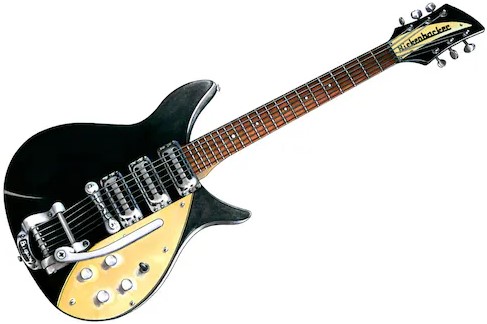 "Take six" was also complete and nearly flawness. "Take seven" also started off well, but George Martin called it to a halt after George Harrison was late again with his riff as the first verse ended. "Take eight" was also complete but, with Ringo’s fire-cracker-like drum fill before the bridge and George’s staccato rhythm guitar work in the final verse, this wasn't deemed good enough either. "Take six" was also complete and nearly flawness. "Take seven" also started off well, but George Martin called it to a halt after George Harrison was late again with his riff as the first verse ended. "Take eight" was also complete but, with Ringo’s fire-cracker-like drum fill before the bridge and George’s staccato rhythm guitar work in the final verse, this wasn't deemed good enough either.
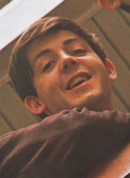 "Take nine" was also complete, but this time you could hear Paul’s higher harmonies getting a little shaky. This and a very noticeable guitar flub in the final verse had the band try it all one more time. "Take ten," as it turned out, was nearly perfect and, with it being 11:30 already and a lot on the agenda that day, they deemed this as “best.” "Take nine" was also complete, but this time you could hear Paul’s higher harmonies getting a little shaky. This and a very noticeable guitar flub in the final verse had the band try it all one more time. "Take ten," as it turned out, was nearly perfect and, with it being 11:30 already and a lot on the agenda that day, they deemed this as “best.”
 However, at about 4:15 pm in the afternoon, a decision was made to return to the song to improve upon it. It was here thought that John should overdub three harmonica riffs, played using the precise notes that George Harrison originally played as his lead guitar riffs. The result here is that we can barely hear George's lead guitar riffs in the finished song. These overdub attempts were made by copying the two-track tape of "take ten" onto another tape machine while John simultaneously recorded his harmonica parts onto the new tape. However, at about 4:15 pm in the afternoon, a decision was made to return to the song to improve upon it. It was here thought that John should overdub three harmonica riffs, played using the precise notes that George Harrison originally played as his lead guitar riffs. The result here is that we can barely hear George's lead guitar riffs in the finished song. These overdub attempts were made by copying the two-track tape of "take ten" onto another tape machine while John simultaneously recorded his harmonica parts onto the new tape.
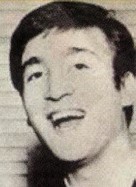 The first attempt at this overdub, "take 11," saw John’s harmonica work a little bit shaky, and "take 12" did not get past the first few seconds because they accidentally didn’t have the volume on the harmonica loud enough. However, "take 13" was the keeper and therefore comprised the final completed version of this song. The harmonica riffs that John added on here are witnessed during the introduction, at the conclusion of the first verse, and then throughout the last 10 seconds. By 4:30 pm, the song was complete. The first attempt at this overdub, "take 11," saw John’s harmonica work a little bit shaky, and "take 12" did not get past the first few seconds because they accidentally didn’t have the volume on the harmonica loud enough. However, "take 13" was the keeper and therefore comprised the final completed version of this song. The harmonica riffs that John added on here are witnessed during the introduction, at the conclusion of the first verse, and then throughout the last 10 seconds. By 4:30 pm, the song was complete.
 The mono and stereo mixes of "There's A Place" were created by George Martin, assisted by Norman Smith and A.B. Lincoln, on February 25th, 1963 in the control room of EMI Studio One. This mixing session was used to create both the mono and stereo masters for nearly all of the tracks contained on their first album, as well as some editing work on the songs “I Saw Her Standing There” and “Please Please Me.” George Martin added a good amount of reverb to John's harmonica on both the mono and stereo mixes of "There's A Place." The fade out during the song's conclusion was also done at this mixing session. The mono and stereo mixes of "There's A Place" were created by George Martin, assisted by Norman Smith and A.B. Lincoln, on February 25th, 1963 in the control room of EMI Studio One. This mixing session was used to create both the mono and stereo masters for nearly all of the tracks contained on their first album, as well as some editing work on the songs “I Saw Her Standing There” and “Please Please Me.” George Martin added a good amount of reverb to John's harmonica on both the mono and stereo mixes of "There's A Place." The fade out during the song's conclusion was also done at this mixing session.
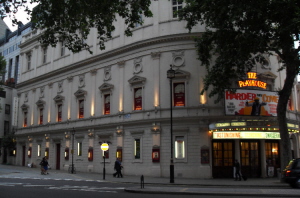 The Beatles did bring "There's A Place" to a recording studio three more times, all of these being specifically for BBC radio. On July 2nd, 1963, they recorded the song in Studio Five of Maida Vale Studios in London between 6:30 and 9:30 pm for the fifth edition of the BBC radio series "Pop Go The Beatles," this being produced by Terry Henebery and broadcast on July 16th between 5 and 5:29 pm. On July 17th, they recorded it at Playhouse Theatre in London between 8:45 and 9:45 pm for the radio show “Easy Beat,” which was produced by Ron Belchier and broadcast on July 21st of that year between 10:31 and 11:30 am. The Beatles did bring "There's A Place" to a recording studio three more times, all of these being specifically for BBC radio. On July 2nd, 1963, they recorded the song in Studio Five of Maida Vale Studios in London between 6:30 and 9:30 pm for the fifth edition of the BBC radio series "Pop Go The Beatles," this being produced by Terry Henebery and broadcast on July 16th between 5 and 5:29 pm. On July 17th, they recorded it at Playhouse Theatre in London between 8:45 and 9:45 pm for the radio show “Easy Beat,” which was produced by Ron Belchier and broadcast on July 21st of that year between 10:31 and 11:30 am.
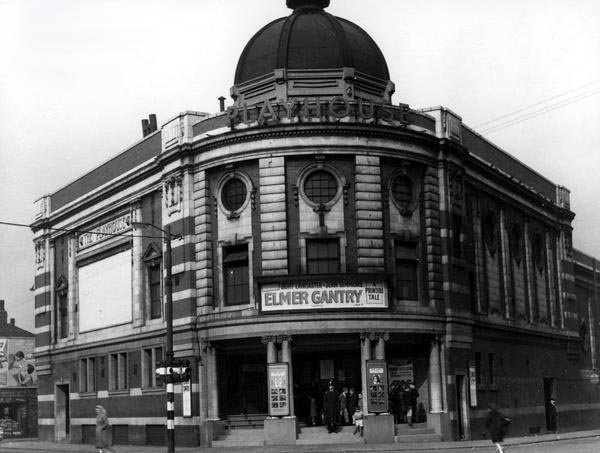 The song's final BBC radio performance took place on August 1st, 1963 at The Playhouse Theatre in Manchester between 4 and 6 pm for BBC's twelfth edition of their radio series “Pop Go The Beatles,” which was produced by Ian Grant and broadcast on September 3rd between 5 and 5:29 pm. This was the last known performance of "There's A Place." The song's final BBC radio performance took place on August 1st, 1963 at The Playhouse Theatre in Manchester between 4 and 6 pm for BBC's twelfth edition of their radio series “Pop Go The Beatles,” which was produced by Ian Grant and broadcast on September 3rd between 5 and 5:29 pm. This was the last known performance of "There's A Place."
Song Structure and Style
As with most of the songs on their first album, “There’s A Place” was composed with an aaba structure, or as 'verse /verse /bridge /verse,' but there is more to its structure than meets the eye. Much more.
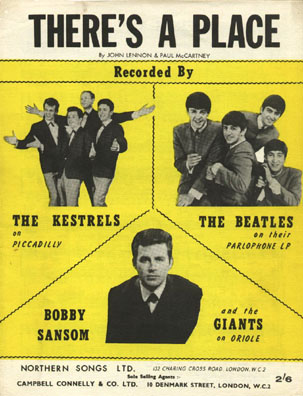 A five measure introduction begins the proceedings, this consisting of a melodic riff repeated two times by John’s harmonica and, if you listen very carefully, Harrison’s lead guitar. At the beginning of the fourth measure, a "Beatles break" occurs which lasts one-and-a-half measures as the reverberation of the last chord rings out. In the ensuing silence, John and Paul perform a harmonized five note descending and then ascending vocal melody line utilizing only the word “there,” becoming a clever anticipatory introduction to the first verse. A five measure introduction begins the proceedings, this consisting of a melodic riff repeated two times by John’s harmonica and, if you listen very carefully, Harrison’s lead guitar. At the beginning of the fourth measure, a "Beatles break" occurs which lasts one-and-a-half measures as the reverberation of the last chord rings out. In the ensuing silence, John and Paul perform a harmonized five note descending and then ascending vocal melody line utilizing only the word “there,” becoming a clever anticipatory introduction to the first verse.
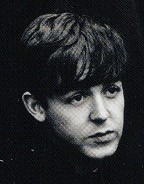 The 15 measure first verse is sung in harmony throughout, John singing the lower melody line while Paul sings his usual higher harmony. The eighth measure includes a triplet played in unison by the whole group which is used as a transition into the second half of the first verse. The 13th measure repeats the harmonica / guitar riff once, which once again leads us into a one-and-a-half measure break, where John and Paul repeat their harmonized five-note run, but this time on the word “I.” The 15 measure first verse is sung in harmony throughout, John singing the lower melody line while Paul sings his usual higher harmony. The eighth measure includes a triplet played in unison by the whole group which is used as a transition into the second half of the first verse. The 13th measure repeats the harmonica / guitar riff once, which once again leads us into a one-and-a-half measure break, where John and Paul repeat their harmonized five-note run, but this time on the word “I.”
 The second verse differs from the first verse in a few different respects. First of all, this one is only twelve measures long and does not include either the triplet, the "Beatles break" or the five-note run harmony. In order to create a proper transition from the verse to the bridge, an alteration of the verse's structure was incorporated by the song's composers. After the first seven measures of verse two, which are identical in structure to the first verse, a complete change occurs during the words “like I love only you.” The altered chord pattern placed here allows for a more natural progression into the bridge. (An altered second verse occurs periodically in Lennon / McCartney songs, one example being “I Should Have Known Better.”) The second verse differs from the first verse in a few different respects. First of all, this one is only twelve measures long and does not include either the triplet, the "Beatles break" or the five-note run harmony. In order to create a proper transition from the verse to the bridge, an alteration of the verse's structure was incorporated by the song's composers. After the first seven measures of verse two, which are identical in structure to the first verse, a complete change occurs during the words “like I love only you.” The altered chord pattern placed here allows for a more natural progression into the bridge. (An altered second verse occurs periodically in Lennon / McCartney songs, one example being “I Should Have Known Better.”)
 The ten measure bridge creates a reflective mood that temporarily relieves the tension of this song. This is achieved by Lennon singing two of the four lines solo for the first time in this song, these alternating with octave harmonies (Paul taking the higher harmony as usual) which also occur only during the bridge. With Lennon’s solo line “In my mind there’s no sorrow” and “there’ll be no sad tomorrows,” we are allowed to see the intention of the song's lyrics, as if the fog has lifted and we now know the moral of the story. The ten measure bridge creates a reflective mood that temporarily relieves the tension of this song. This is achieved by Lennon singing two of the four lines solo for the first time in this song, these alternating with octave harmonies (Paul taking the higher harmony as usual) which also occur only during the bridge. With Lennon’s solo line “In my mind there’s no sorrow” and “there’ll be no sad tomorrows,” we are allowed to see the intention of the song's lyrics, as if the fog has lifted and we now know the moral of the story.
 The last two measures of the bridge once again repeat the break and the harmonized five-note harmony on the word “there” that is identical to what was heard in the intro. This then naturally transports the listener to the last verse, this being a near identical repeat of the first verse, lyrics and all. Identical, that is, except for it being only 14 measures in length instead of 15. In this instance, there is no harmonized five-note run. (Three times in a two minute song is clearly enough; a fourth would have been a little much, as the composers or George Martin must have realized.) So the ‘break’ is only half a measure long, which then propels the listener into a conclusion to create a note of finality. This conclusion consists of a continually harmonized repetition of the title of the song alternating with the harmonica / guitar riff as the song fades out. The last two measures of the bridge once again repeat the break and the harmonized five-note harmony on the word “there” that is identical to what was heard in the intro. This then naturally transports the listener to the last verse, this being a near identical repeat of the first verse, lyrics and all. Identical, that is, except for it being only 14 measures in length instead of 15. In this instance, there is no harmonized five-note run. (Three times in a two minute song is clearly enough; a fourth would have been a little much, as the composers or George Martin must have realized.) So the ‘break’ is only half a measure long, which then propels the listener into a conclusion to create a note of finality. This conclusion consists of a continually harmonized repetition of the title of the song alternating with the harmonica / guitar riff as the song fades out.
 A side note might be necessary here to explain why there was a need for a conclusion to be tacked on to the end of this song. Usually, Lennon / McCartney songs that have an aaba structure have verses that conclude with the title, such as “I Saw Her Standing There,” “Love Me Do” and “I Want To Hold Your Hand.” Verses such as in these three examples were written with a note of finality ‘built in,’ so to speak, which did not need a conclusion tacked on at the end to make it sound complete. To understand this, imagine if “There’s A Place” ended directly after the final verse with the words “when I’m alone.” Since the end of the verse was not on the signature chord of the song, in this case “F,” standard practice at the time usually required the signature chord to be returned to for creating an appropriate ‘resolve.’ Therefore, a separate conclusion needed to be supplimented at the end of “There’s A Place.” A side note might be necessary here to explain why there was a need for a conclusion to be tacked on to the end of this song. Usually, Lennon / McCartney songs that have an aaba structure have verses that conclude with the title, such as “I Saw Her Standing There,” “Love Me Do” and “I Want To Hold Your Hand.” Verses such as in these three examples were written with a note of finality ‘built in,’ so to speak, which did not need a conclusion tacked on at the end to make it sound complete. To understand this, imagine if “There’s A Place” ended directly after the final verse with the words “when I’m alone.” Since the end of the verse was not on the signature chord of the song, in this case “F,” standard practice at the time usually required the signature chord to be returned to for creating an appropriate ‘resolve.’ Therefore, a separate conclusion needed to be supplimented at the end of “There’s A Place.”
 As for musicianship, both Lennon and Harrison play rhythm guitar throughout, with the exception of George’s hardly noticeable lead work on the signature riff. Since there was no solo section written into for song, its musical highlight is John's harmonica riff, which only occurs periodically. The only other contribution from George is background vocals, which occus during the vocal line "love only you" in the second verse. As for musicianship, both Lennon and Harrison play rhythm guitar throughout, with the exception of George’s hardly noticeable lead work on the signature riff. Since there was no solo section written into for song, its musical highlight is John's harmonica riff, which only occurs periodically. The only other contribution from George is background vocals, which occus during the vocal line "love only you" in the second verse.
Paul’s bass work is proficient at best, but since it was performed simultaneously with his spot-on high harmonies throughout the song, “proficient” is definitely worth recognition. Ringo performs his trademark “beat” style drumming, which appears as an identical but slower version of both “Boys” and “I Saw Her Standing There.” He gets to add his flams, his accents and his ‘awkward-but-lovable’ left handed drum fills, which results in his putting in a noteworthy performance.
 John Lennon’s vocal delivery is timidly but effectively performed, including his warbly-but-classy accents in the verses, such as on the words “place,” “go” and “low” in the opening verse. Motown artists, such as the influential Smokey Robinson, were no doubt the catalyst to this vocal gimmick, which John Lennon performed flawlessly throughout this song. John Lennon’s vocal delivery is timidly but effectively performed, including his warbly-but-classy accents in the verses, such as on the words “place,” “go” and “low” in the opening verse. Motown artists, such as the influential Smokey Robinson, were no doubt the catalyst to this vocal gimmick, which John Lennon performed flawlessly throughout this song.
 It has been noted that The Beatles only wrote songs about love (and/or relationships) throughout their earlier career, and that the first appearance of a song outside of this topic didn’t occur until around 1966. Although this is debatable (or, should I say, incorrect, because “Nowhere Man” being initially released in December of 1965…but if you say that it appeared first in the US in 1966, then I stand corrected), there have been a few Beatles songs composed before 1966 that only hint at a relationship. “One After 909” comes to mind. “There’s A Place” is another. It has been noted that The Beatles only wrote songs about love (and/or relationships) throughout their earlier career, and that the first appearance of a song outside of this topic didn’t occur until around 1966. Although this is debatable (or, should I say, incorrect, because “Nowhere Man” being initially released in December of 1965…but if you say that it appeared first in the US in 1966, then I stand corrected), there have been a few Beatles songs composed before 1966 that only hint at a relationship. “One After 909” comes to mind. “There’s A Place” is another.
 Although it has been said that Lennon did not write about himself in his earlier work with The Beatles before “Help!,” we see here an example that blows that theory out of the water. This song appears to be John's first piece of self-analysis, thus pre-dating the similar topic of The Beach Boys’ hit song “In My Room,” by a few months. In the book "In My Life: John Lennon Remembered," authors Mark Lewisohn and Kevin Howlett propose that "There's A Place" demonstates Lennon's "early fascination with self-discovery and the fulfillment such knowledge can bring." Although it has been said that Lennon did not write about himself in his earlier work with The Beatles before “Help!,” we see here an example that blows that theory out of the water. This song appears to be John's first piece of self-analysis, thus pre-dating the similar topic of The Beach Boys’ hit song “In My Room,” by a few months. In the book "In My Life: John Lennon Remembered," authors Mark Lewisohn and Kevin Howlett propose that "There's A Place" demonstates Lennon's "early fascination with self-discovery and the fulfillment such knowledge can bring."
 After the first verse informs us that the place that the singer can go to cheer himself up is his mind, it’s the second verse that tells of a relationship. In his mind he thinks of the things that his "significant other" does, such us her saying that she loves only him. But the general theme here is stated in the bridge. When he is alone, he thinks about when there is “no sorrow” and about a happy future. This topic is returned to and refined much later in his solo work “Imagine.” After the first verse informs us that the place that the singer can go to cheer himself up is his mind, it’s the second verse that tells of a relationship. In his mind he thinks of the things that his "significant other" does, such us her saying that she loves only him. But the general theme here is stated in the bridge. When he is alone, he thinks about when there is “no sorrow” and about a happy future. This topic is returned to and refined much later in his solo work “Imagine.”
 Vee-Jay's "Introducing The Beatles" album
|
American Releases
 The first release of “There’s A Place” on US shores was on the legendary Vee-Jay LP "Introducing The Beatles," released on January 10th, 1964. The next US release was on a single, as the b-side to “Twist And Shout,” which wasn't released in Britain at the time. This single was released on the newly formed Vee-Jay subsidiary Tollie Records in late February of 1964 as a means for the label to capitalize on The Beatles performing “Twist And Shout” on the Ed Sullivan Show on February 23rd, 1964. Although its a-side reached #2 on the Billboard Hot 100, “There’s A Place” charted at #74 for the week of April 11th, 1964. The first release of “There’s A Place” on US shores was on the legendary Vee-Jay LP "Introducing The Beatles," released on January 10th, 1964. The next US release was on a single, as the b-side to “Twist And Shout,” which wasn't released in Britain at the time. This single was released on the newly formed Vee-Jay subsidiary Tollie Records in late February of 1964 as a means for the label to capitalize on The Beatles performing “Twist And Shout” on the Ed Sullivan Show on February 23rd, 1964. Although its a-side reached #2 on the Billboard Hot 100, “There’s A Place” charted at #74 for the week of April 11th, 1964.
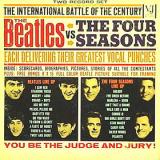 The next US release of the song occurred in August of 1964 with the re-release of the Tollie single on the Vee-Jay “Oldies 45” label. Then came the Vee-Jay double album “The Beatles vs. The Four Seasons” released on October 1st, 1964, which coupled the “Introducing The Beatles” LP with “The Golden Hits of the Four Seasons.” This was followed less than two weeks later by another repackage of the Vee-Jay album under the new title “Songs, Pictures And Stories Of The Fabulous Beatles,” which was released on October 12th, 1964. The next US release of the song occurred in August of 1964 with the re-release of the Tollie single on the Vee-Jay “Oldies 45” label. Then came the Vee-Jay double album “The Beatles vs. The Four Seasons” released on October 1st, 1964, which coupled the “Introducing The Beatles” LP with “The Golden Hits of the Four Seasons.” This was followed less than two weeks later by another repackage of the Vee-Jay album under the new title “Songs, Pictures And Stories Of The Fabulous Beatles,” which was released on October 12th, 1964.
 As it turned out, Capitol Records decided to omit "There's A Place" from its March, 1965 released “The Early Beatles” album. The result of this omission was that the song was not available in album form for the next 16 years. It also meant that the excellent stereo mix of the song was not available during this long duration. However, Capitol did release the song seven months later, but only as the b-side of "Twist And Shout" on their budget Starline label on October 11th, 1965, this being made available for only a short time. This was the only way that fans could own "There's A Place" throughout the remaining '60s as well as the entire '70s. Interestingly, Capitol switched the songwriting credit for the first time to "Lennon / McCartney" to make it uniform with the rest of their catalog, something they maintained whenever they released the song in the future. As it turned out, Capitol Records decided to omit "There's A Place" from its March, 1965 released “The Early Beatles” album. The result of this omission was that the song was not available in album form for the next 16 years. It also meant that the excellent stereo mix of the song was not available during this long duration. However, Capitol did release the song seven months later, but only as the b-side of "Twist And Shout" on their budget Starline label on October 11th, 1965, this being made available for only a short time. This was the only way that fans could own "There's A Place" throughout the remaining '60s as well as the entire '70s. Interestingly, Capitol switched the songwriting credit for the first time to "Lennon / McCartney" to make it uniform with the rest of their catalog, something they maintained whenever they released the song in the future.
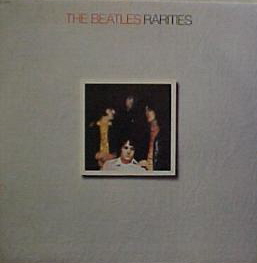 On March 24th, 1980, Capitol released the American version of the album “Rarities,” which contained the original stereo version of “There’s A Place.” The stereo mix of this song had not been available in the US since the Vee-Jay LPs of 1964 went out of print, so the "Rarities" album was a revelation for its time. On March 24th, 1980, Capitol released the American version of the album “Rarities,” which contained the original stereo version of “There’s A Place.” The stereo mix of this song had not been available in the US since the Vee-Jay LPs of 1964 went out of print, so the "Rarities" album was a revelation for its time.
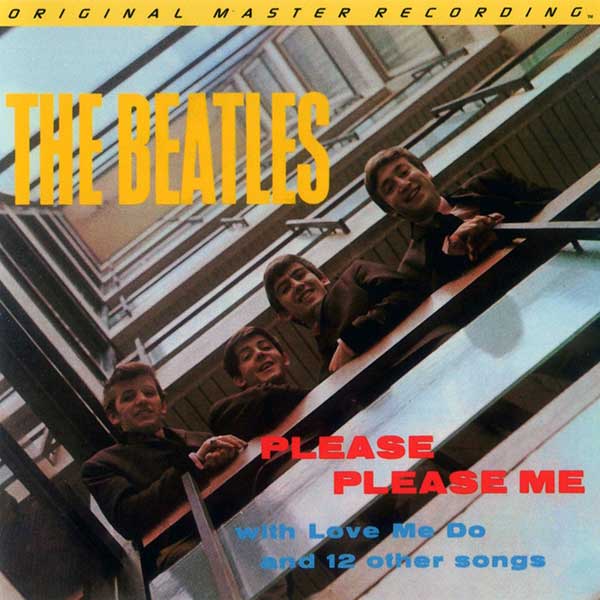 The first time the original British "Please Please Me" album was made available in America was on the "Original Master Recording" vinyl edition released through Mobile Fidelity Sound Lab in January of 1987. This LP included "There's A Place" and was made possible utilizing half-speed mastering technology from the original master tape on loan from EMI. This version of the album was available for only a short time and is quite hard to find today. The first time the original British "Please Please Me" album was made available in America was on the "Original Master Recording" vinyl edition released through Mobile Fidelity Sound Lab in January of 1987. This LP included "There's A Place" and was made possible utilizing half-speed mastering technology from the original master tape on loan from EMI. This version of the album was available for only a short time and is quite hard to find today.
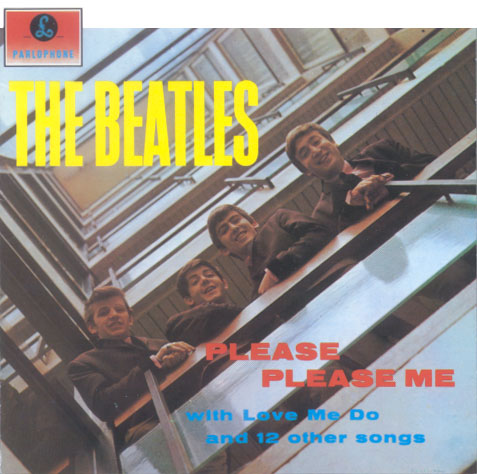 The original British "Please Please Me" album was released on compact disc for the first time on February 26th, 1987 and on vinyl on July 21st, 1987, although it was only in mono at first. The remastered stereo version of the album was finally released on CD on September 9th, 2009 and then on vinyl on November 13th, 2012. The original British "Please Please Me" album was released on compact disc for the first time on February 26th, 1987 and on vinyl on July 21st, 1987, although it was only in mono at first. The remastered stereo version of the album was finally released on CD on September 9th, 2009 and then on vinyl on November 13th, 2012.
 On June 30th, 1992, Capitol released the box set “Compact Disc EP Collection,” which featured “There’s A Place” due to the song's being included on the original UK “Twist And Shout” EP in 1963. On June 30th, 1992, Capitol released the box set “Compact Disc EP Collection,” which featured “There’s A Place” due to the song's being included on the original UK “Twist And Shout” EP in 1963.
Apple's CD box set entitled “The Beatles In Mono” was released on September 9th, 2009, this containing the song in its pristine remastered mono condition, the vinyl edition first coming out on September 9th, 2014.
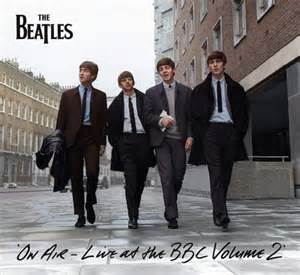 On November 11th, 2013, the album "On Air - Live At The BBC Volume 2" was released, this featuring a long lost rendition of "There's A Place" as recorded on August 1st, 1963 for the BBC radio series "Pop Go The Beatles." Notice George's guitar runs making up for the absence of the harmonica on this recording, not to mention flawless harmonies from John and Paul. On November 11th, 2013, the album "On Air - Live At The BBC Volume 2" was released, this featuring a long lost rendition of "There's A Place" as recorded on August 1st, 1963 for the BBC radio series "Pop Go The Beatles." Notice George's guitar runs making up for the absence of the harmonica on this recording, not to mention flawless harmonies from John and Paul.
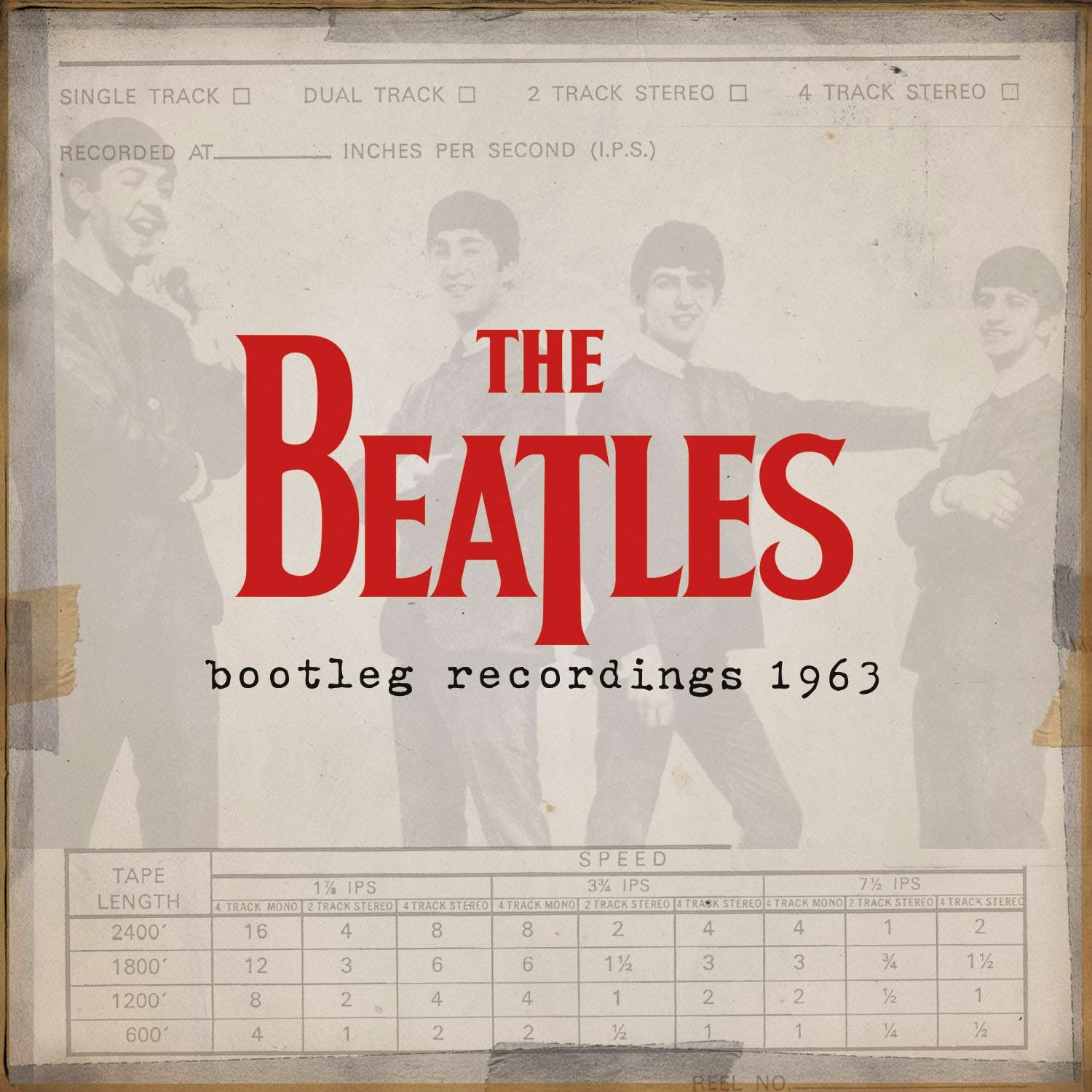 On December 17th, 2013, iTunes released a 59 track compilation album they called "Bootleg Recordings 1963" that was only available on their downloading platform. Included here were takes 5 - 6, and 8 - 9 of "There's A Place" from the band's famous recording session in EMI Studio Two on February 11th, 1963. The purpose of this iTunes release was to extend the copyright of these recordings under European Union law from 50 years (which would have expired at the end of 2013) to 70 years (until 2033), this being considered an official release. This compilation album was only available in the US on that date to those in the know for a few hours for $39.99 in its entirety or to be purchased as individual tracks, but was later made available for purchase as well. On December 17th, 2013, iTunes released a 59 track compilation album they called "Bootleg Recordings 1963" that was only available on their downloading platform. Included here were takes 5 - 6, and 8 - 9 of "There's A Place" from the band's famous recording session in EMI Studio Two on February 11th, 1963. The purpose of this iTunes release was to extend the copyright of these recordings under European Union law from 50 years (which would have expired at the end of 2013) to 70 years (until 2033), this being considered an official release. This compilation album was only available in the US on that date to those in the know for a few hours for $39.99 in its entirety or to be purchased as individual tracks, but was later made available for purchase as well.
Live Performances
 Although the band felt strongly about it at the time of its recording, they all apparently lost interest in "There's A Place" quickly thereafter. They did not perform it during any of their national tours of 1963, and there is not any official documentation showing the group performing it anywhere else that year. Since it has been stated in Mark Lewisohn's book "The Complete Beatles Chronicle" that this song was a part of their live act in 1963, one would have to assume that its performance life was very limited at best. They preferred to continue to perform the cover songs recorded for the first album, such as "Baby It's You," "Chains" and "A Taste Of Honey," no doubt because of how uncomplicated these were in comparison to "There's A Place." Although the band felt strongly about it at the time of its recording, they all apparently lost interest in "There's A Place" quickly thereafter. They did not perform it during any of their national tours of 1963, and there is not any official documentation showing the group performing it anywhere else that year. Since it has been stated in Mark Lewisohn's book "The Complete Beatles Chronicle" that this song was a part of their live act in 1963, one would have to assume that its performance life was very limited at best. They preferred to continue to perform the cover songs recorded for the first album, such as "Baby It's You," "Chains" and "A Taste Of Honey," no doubt because of how uncomplicated these were in comparison to "There's A Place."
Conclusion
 Lennon had explained many times that he never paid that much attention to lyrics and that, in the early years with The Beatles, lyrics were not much of a consideration for him. It was only when Bob Dylan suggested to him that he should use his songs to express his views and feelings that Lennon adjusted his approach. Listening to The Beatles' discography through to mid 1965, you can see that this must have been John’s viewpoint, since the main focus of all of these lyrics tended to be about love or relationships. He even succumbed to re-using topics in his songs, such as with “All I’ve Got To Do” and “Any Time At All.” Lennon had explained many times that he never paid that much attention to lyrics and that, in the early years with The Beatles, lyrics were not much of a consideration for him. It was only when Bob Dylan suggested to him that he should use his songs to express his views and feelings that Lennon adjusted his approach. Listening to The Beatles' discography through to mid 1965, you can see that this must have been John’s viewpoint, since the main focus of all of these lyrics tended to be about love or relationships. He even succumbed to re-using topics in his songs, such as with “All I’ve Got To Do” and “Any Time At All.”
 This fact makes it all the more interesting that, this early in the songwriting history of John Lennon and Paul McCartney, we find in "There's A Place" an introspective lyric that suggests exploring the mind, although not nearly in the same fashion as they suggested in their song “Tomorrow Never Knows” three years later. This solidifies the suggestion that The Beatles were truly ahead of their time… even of their own time! This fact makes it all the more interesting that, this early in the songwriting history of John Lennon and Paul McCartney, we find in "There's A Place" an introspective lyric that suggests exploring the mind, although not nearly in the same fashion as they suggested in their song “Tomorrow Never Knows” three years later. This solidifies the suggestion that The Beatles were truly ahead of their time… even of their own time!
Song Summary
"There’s A Place”
Written by: Paul McCartney / John Lennon
- Song Written: February, 1963
- Song Recorded: February 11, 1963
- First US Release Date: January 6, 1964
- First US Album Release: Vee Jay #VJLP 1062 “Introducing…The Beatles”
- US Single Release: Tollie #9001 (B-side to “Twist And Shout”)
- Highest Chart Position: #74
- British Album Release: Parlophone #PCS3042 “Please Please Me”
- Length: 1:49
- Key: F major
- Producer: George Martin
- Engineers: Norman Smith, Richard Langham
Instrumentation (most likely):
- John Lennon - Lead Vocals, Rhythm Guitar (1958 Rickenbacker 325), Harmonica (Hohner Chromatic)
- Paul McCartney - Bass Guitar (1961 Hofner 500/1), Harmony Vocals
- George Harrison – Lead Guitar (1957 Gretsch Duo Jet), Background Vocals
- Ringo Starr – Drums (1960 Premier 58/54 Mahogany)
Written and compiled by Dave Rybaczewski
|
IF YOU WOULD LIKE TO MAKE A DONATION TO KEEP THIS WEBSITE UP AND RUNNING, PLEASE CLICK BELOW!
Sign Up Below for our MONTHLY BEATLES TRIVIA QUIZ!
|